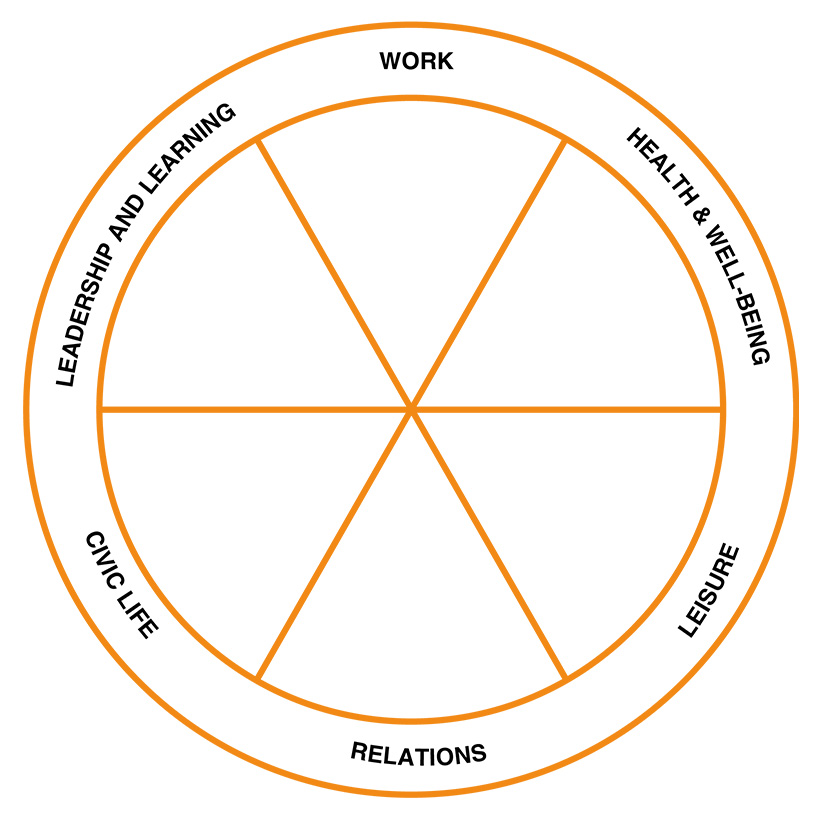Deeper Reflection
Activity Summary
The activity allows for the development of a personal “Reflection Practice,” through which students become aware of what they want to learn, set their own priorities, and establish an action plan for success.
Activity Plan
1
5 min
The teacher explains how the activity will be conducted and sets up the appropriate learning environment for the experience (see Tips & Tricks section).
The teacher gives each student an A4 sheet containing the template below (it will be used in step 3 of the activity); or draws the template on the board and asks students to copy it onto a sheet of paper.

2
5-10 min
The teacher asks students to answer the following question, “WHAT IS ALIVE IN YOU AT THIS MOMENT?”
This question means: what thoughts students have at this moment, what themes/areas of life occupy a lot of space in students’ minds (e.g. sofide, hopes, dreams, fears, etc.)…
Students write on the paper the thoughts / reflections that come to their mind. The teacher can set a 5/10-minute timer to scan the time and phases of the activity.
3
5-10 min
The teacher asks students to answer the following question, “WHAT IS IMPORTANT TO YOU RIGHT NOW?”
This question means: What areas of their lives do students plan to work on in the upcoming period?
Students use the blank template below by filling it in the different areas.
The teacher can set a 5/10-minute timer to scan the time and phases of the activity.

4
5-10 min
The teacher asks students to answer the following question, “WHAT MAKES YOU FEEL EXCITED ABOUT LIFE?”
This question requires students to tell about an occasion when they worked on something they really cared about
Students write on the paper the thoughts / reflections that come to their mind. The teacher can set a 5/10-minute timer to scan the time and phases of the activity.
5
5-10 min
To conclude the activity, the teacher can:
- make students understand that this is a method they can use whenever they need it in their personal lives, if they need to prioritize and become intentional with their time and energy;
- ask the class to share their reflections and/or express an opinion about the activity and its effectiveness. It may also be helpful to consider in-between sharing steps (first in pairs, then in small groups) to facilitate the process.
6
Outside school hours
Whenever students want to reflect on some aspect of their lives on a metalevel, they can reuse the questions/templates provided by the first steps of this activity, or create new questions ad hoc.
Format
It is helpful to conclude the reflective exercise with a creative output.
The format is completely up to the student, depending on what makes sense and what motivates him or her. The student could accomplish the activity in written form, or by creating a moodboard, video, podcast, song, painting, etc.
(Other) guiding questions for the students:
- What is your motivation for creating, maintaining and developing a practice for yourself?
- In your life, what is in your control and what’s not?
- Who do you wish to take with you on this journey of creating change? Who do you need help from in order to create the change you wish to make?
- How might your friends, classmates, parents, & teachers support you? What might be a way to invite them to support you? How can you support others in their learning?
- Who might teach you something you would like to learn? Who might be an unsuspected teacher for you?
- How might you positively impact your friends, family, teachers, classmates, school, neighborhood, city?
- How will you hold yourself accountable?
Tips & Tricks
- The activity can be made shorter or longer depending on the students’ needs.
- The students can be encouraged to do this activity outside of school as well, to start doing this as a personal iterative practice.
- This activity particularly serves students who are facing challenges such as tests- and exams, big choices and/or struggling with self worth, prioritising and time management.
Additional Resources
This activity is inspired by the ‘Enterprising Leadership Practice’ from the International education ‘Kaospilot’. Read more about this practice on: https://www.kaospilot.dk/approach/
